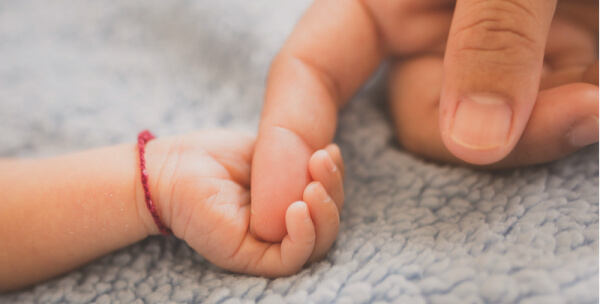Want Filipino dual citizenship or nationality? Read this guide.
To get you started, here’s a beginners guide to the laws concerning dual citizenship in the Philippines.

When you’re expecting a newborn, life can be both wonderful and stressful at the same time. This is especially true if you’re on leave as a foreigner or non-resident in another country, no matter if you’re simply a long-term visitor, a tourist, or permanent expat. Medical expenses for prenatal and maternity care can be tricky. This guide will help you navigate what to expect when you’re expecting in the Philippines.
Across the country, about 1 in 10 Filipinos struggle with infertility. Due to these rates, it’s no surprise that the use of IVF has become more common over the past few decades. But it’s not cheap, and most government subsidies won’t cover it.
Medical tourism, or traveling abroad for medical procedures, is alive and well in the Philippines. The country ranks 8th in the world as the most popular destination for medical tourism. Among the various common medical services sought by tourists or visitors are IVF procedures and fertility treatments. Most of the hospitals catering to foreign IVF patients are in the country’s capital, Manila.
In the Philippines, the local currency is the Philippine peso. It’s sometimes written as PHP or symbolised by ‘₱.’ If you want to make sure you’re understanding the conversion with your home currency, check with anonline currency converter.
| IVF fertility treatment in the Philippines | Average cost (PHP) |
|---|---|
| IVF process (total costs) | ₱200,000 to ₱400,00 |
| In vitro fertilization (IVF) fertility drugs | Part of the built-in cost of total IVF cycle |
| Intracytoplasmic sperm injection (ICSI) | ₱23,000 to ₱28,000 |
|---|---|
| Donor eggs retrieval | ₱50,000 to ₱60,000 |
| Frozen embryo transfer (FET) | ₱100,000 or less |
| Embryo storage, yearly | ₱120,000 to ₱130,000 |
There are no Filipino public or private health insurance carriers that cover IVF treatments. However, various expat or foreign private health insurers may cover the procedures. Different IVF treatment centers may also be able to provide financial assistance if it’s needed. It’s best to check with your own private insurance carrier for IVF coverage for more options.
For more information on IVF and fertility treatments in the Philippines
Having a baby in the Philippines can be costly, with or without health insurance. Filipinos have access to universal health coverage through the Philippine Health Insurance Corporation or PhilHealth. This state-sponsored insurance offers plans that cover hospital deliveries and homebirth and midwifery clinics. Here are some average costs:
Can a non-resident or visitor on a tourist or other visa deliver a baby in the Philippines? Is birth tourism a thing in the Philippines?
If you’re a foreign or non-resident visitor or tourist, you’re allowed to give birth in a Filipino hospital. Expats tend to prefer hospitals over home births, due to the higher standards of care in facilities. There are certain hospitals that foreigners prefer, as they are hospitals with Western standards of care - St. Luke’s and Makati Medical Centre are two of them.
Birth tourism in the Philippines isn’t really popular; it’s not generally noted to be one of the countries that people travel to for medical reasons when pregnant.
Long-term foreign residents or expats have access to the state-sponsored health coverage, PhilHealth, which will cover delivery and prenatal treatment for all mothers who will give birth soon.
There’s also a difference in costs between using public or private hospitals, as the latter will likely cost more for delivery services. Most government hospitals have a fairly high standard of operating, just as private hospitals do, but private hospitals will have higher-grade technologies and facilities. Expect to find private hospitals in all the key cities throughout the country.
| Baby delivery medical procedures in the Philippines | Average cost without insurance (PHP) | Average cost with insurance (PHP) |
|---|---|---|
| Prenatal doctor visit and care | ₱700 - ₱1,250 per month | Free after payment of annual premium of ₱2,400 |
| Prenatal ultrasound | ₱1,150 - ₱4,000 | Free after payment of annual premium of ₱2,400 |
| Birth and delivery in the hospital | ₱15,000 - ₱100,000 | Free after payment of annual premium of ₱2,400 |
| Cesarean section in the hospital | ₱80,000 - ₱170,000 | Free after payment of annual premium of ₱2,400, if done at an accredited hospital |
| Home birth and delivery with midwife | Discouraged | Discouraged |
Lately, home births are discouraged, as the Department of Health attempts to implement reforms that lower maternal and neonatal mortality. This policy is somewhat controversial, but it means that most mothers attempt to reach a hospital or medical facility when they’re nearing labour.
If there are no complications, a hospital stay is usually 2 days. With a Caesarian section, you’ll probably have to stay 1-2 days more, as it’s a more complex procedure.
Here are some items you might want to bring to the hospital when you’re about to give birth:
When you give birth, bring the following documents to the hospital:
In most cases, the hospital will submit your registration directly to the city hall and the National Statistics Office, which issues birth certificates. Once this process has occurred, you can phone the office and request a birth certificate through the post, or you can visit in-person. There is a small issuance fee.
If your child is born in the Philippines and one parent is a Filipino citizen, then your baby is automatically a citizen of the Philippines. The government does officially recognise dual citizenship.
Working mothers are eligible for 120 days of maternity leave and up to 150 days of leave if they're single mothers. Fathers are eligible for up to 7 days of paternity leave for the first 4 legitimate deliveries of his legitimate spouse.
Whether you’re an expat or a constant traveler, you’re likely balancing life between two different worlds.Wise can help you simplify. Wise lets you move your money across the globe with little stress. By offering currency exchange at the interbank rate, without the hidden costs of most banks, Wise removes surprise fees and hidden markups. With Wise, you’ll spend less on money transfer and currency fees, and more on things that matter for your adventures.
For additional convenience, you can open a borderless multi-currency account that has an associated debit card. Through this account, you can manage money across 50+ countries, and send or receive money in dozens of currencies, Philippine peso included.
Becoming a new parent in the Philippines is a complicated process, so it’s that much more important to do your research ahead of time. Refer back to this guide when you need a resource for addressing your questions and concerns.
*Please see terms of use and product availability for your region or visit Wise fees and pricing for the most up to date pricing and fee information.
This publication is provided for general information purposes and does not constitute legal, tax or other professional advice from Wise Payments Limited or its subsidiaries and its affiliates, and it is not intended as a substitute for obtaining advice from a financial advisor or any other professional.
We make no representations, warranties or guarantees, whether expressed or implied, that the content in the publication is accurate, complete or up to date.

To get you started, here’s a beginners guide to the laws concerning dual citizenship in the Philippines.

The Philippines is the 13th most-populated country on Earth. Millions of tourists and expats arrive there each year, hoping to get a glimpse of some unique...

With 17,500km of coastline and over 7,000 islands, the Philippines is a popular destination for those considering a relocation. Before you take the leap, you...

Living in the Philippines, the first thing you’ll notice is how friendly your neighbors are. The general mood in the island country is one of optimism and...

The Philippines is a popular destination for overseas travellers. The country’s healthcare is considered good by international standards, and government...

Spreading over 7000 islands, between the Pacific Ocean and the South China Sea, the Philippines is famous for its friendly community, tropical climate and...